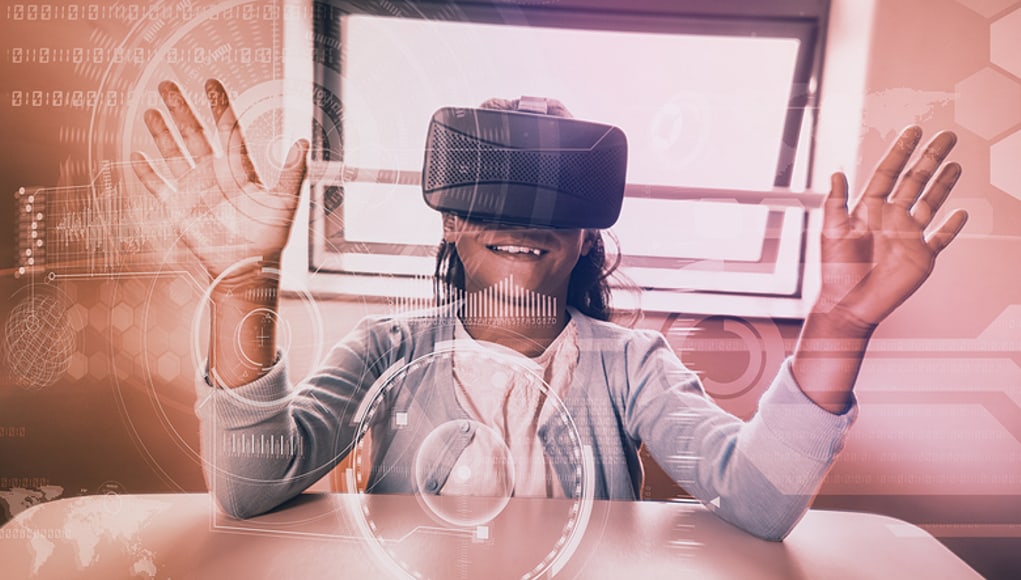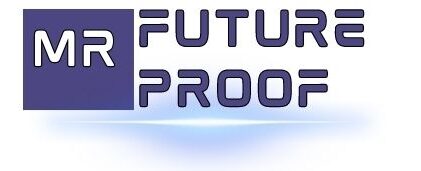Virtual reality in the classroom enhances learning through immersive experiences. Incorporating vr technology allows students to interact with curriculum material in a more engaging and interactive way, leading to improved knowledge retention and academic performance.
With the growing availability and affordability of vr technology, educational institutions are increasingly adopting it as a means of supplementing traditional teaching methods. By creating virtual experiences that simulate real-life situations, students can better internalize knowledge they’ve learned in the classroom.
Furthermore, vr technology provides a valuable tool for educators to deliver lessons remotely, potentially bridging the gap between students in underprivileged areas and access to quality education. As we explore the benefits of vr in the classroom, it’s important to examine its potential drawbacks and limitations.

Credit: www.gettingsmart.com
Introduction: The Rise Of Immersive Learning
Why Immersive Learning Matters For Modern Education?
In today’s fast-paced world, education has undergone a significant transformation with the integration of technology. This marriage of technology and education has opened a gateway to a new learning experience called immersive learning, also known as interactive learning. By experiencing learning in a more immersive way, learners are better able to engage and retain information.
When it comes to modern education, immersive learning is undoubtedly the buzzword. But what makes immersive learning so important?
- Immersive learning promises a more interactive learning experience for learners of all ages. It is a dynamic pedagogical approach that is powered by a range of technologies such as virtual reality, augmented reality, and mixed reality.
- It enables participants to interact with their environment in a safe, controlled, and highly experiential way.
- It makes it possible to explore topics and subjects in a completely new, engaging, and unique way.
Understanding The Advantages Of Virtual Reality In The Classroom
Virtual reality (vr) is one of the most popular technologies used to create immersion in the classroom. Vr provides an interactive and three-dimensional simulation of an environment that can be explored and manipulated in real-time. The role of virtual reality in the classroom is becoming increasingly important, and here’s why:
- Vr provides learners with a safe space to take risks and experiment without real-world consequences.
- It provides access to experiences that would otherwise be impossible, or cost-prohibitive to teach in real-world settings.
- With virtual reality, students can engage in real-world scenarios and develop skills such as critical thinking, problem-solving, and decision-making.
- Vr promotes engagement and interest, driving long-term retention of information.
Immersive technologies like virtual reality are revolutionizing the learning process, providing unparalleled opportunities for engagement, interactivity, and experiential learning. Immersive learning is an approach that can enhance any learning experience, enabling the learner to explore, and interact with educational materials in completely new and effective ways.
With the continued developments in immersive technologies, we can expect to see the rise of more impactful and immersive learning experiences in the classroom.
Exploring Immersive Learning: Virtual Reality In The Classroom
Virtual Reality In The Classroom: Enhancing Learning Through Immersive Experiences
It’s no secret that technology reshapes the way we learn, teach, and process information. We are all familiar with traditional teaching methods, but what about immersive learning experiences? Virtual reality (vr) is one such technology that is expanding the concept of learning.
The Benefits Of Virtual Reality In Education
Virtual reality technology offers a multitude of benefits to students, educators, and parents alike. Vr in education has been found to:
- Increase engagement and motivate students to learn
- Enhance critical thinking and problem-solving skills
- Improve retention rates and information recall
- Provide accessible and equitable learning experiences for all students, regardless of their abilities
- Offer a safe environment to learn and practice real-life skills
Applications Of Virtual Reality In Educational Settings
From science to history, vr can enhance every subject. Here are some examples of how vr can be used in educational settings:
- Science and biology classes can use vr to explore the human body and its organs, ecosystems, and molecular structures.
- History classes can benefit from virtual tours of historical sites, such as ancient cultures and ruined cities, bringing education to life.
- Language classes can use vr to offer language exchanges and immersive cultural experiences.
- Vr simulations can also train students for real-world scenarios such as construction, military, and medical fields.
Overcoming Barriers To Adoption: The Future Of Vr In Education
While vr technology holds immense potential for educational purposes, it still remains underutilized due to some barriers. However, with advancements in technology, vr can overcome these obstacles. Here are some of the ways vr in education is expected to develop:
- The cost of vr will decrease and become more accessible to all schools.
- Vr will offer personalized learning experiences that cater to each student’s unique learning style.
- With the combination of augmented reality (ar), vr, and artificial intelligence (ai), students will have an even more realistic and interactive learning environment.
Vr technology offers innovative ways to enhance the traditional teaching and learning environment. It helps students learn in an immersive and engaging manner, offering accessible and equitable education for all students, regardless of their abilities. Although the vr industry is still in its early stages, it has already started transforming the way we look at education.
Designing Immersive Learning Solutions: Best Practices
Virtual reality is transforming the education industry, providing students with unparalleled immersive experiences that enhance learning, engagement, and retention. With the ability to simulate realistic scenarios, virtual reality offers exceptional opportunities to explore complex concepts and ideas, making it an invaluable tool for educators at all levels.
In this post, we’ll explore the best practices for designing immersive learning solutions that cater to the unique needs of k-12 and higher education students.
The Role Of Instructional Design In Immersive Learning
Instructional design plays a critical role in developing effective virtual reality learning experiences that align with pedagogical principles and objectives. The following are some key points to consider when designing instructional content for immersive learning:
- Define clear learning objectives that align with the curriculum.
- Develop content that fosters exploration, critical thinking, and problem-solving.
- Ensure that the virtual environment aligns with real-world scenarios.
- Incorporate immersive assessments that evaluate the application of knowledge and skills.
- Design activities that promote collaboration, communication, and creativity.
Designing Immersive Learning Experiences For K-12 And Higher Education
The following are some of the best practices for designing immersive learning experiences for k-12 and higher education students:
- Ensure that the content aligns with the age and cognitive level of students.
- Use concise and clear language that is easy for students to understand.
- Incorporate a balance of visual and auditory information to support different types of learners.
- Develop interactive content that allows students to explore concepts and engage with learning materials.
- Encourage critical thinking by providing scenarios that allow students to make decisions and see the consequences.
Evaluating The Effectiveness Of Immersive Learning Experiences In The Classroom
Evaluation is critical to understanding the effectiveness of immersive learning experiences and making adjustments as needed. The following are some key points to consider when evaluating the effectiveness of immersive learning experiences in the classroom:
- Use pre- and post-assessments to evaluate the effectiveness of virtual reality learning experiences.
- Gather feedback from students, educators, and other stakeholders to identify areas for improvement.
- Monitor student engagement and behavior during virtual reality sessions to ensure that students are staying on task.
- Align assessment data with learning objectives to determine if students are meeting key learning outcomes.
Overall, designing effective immersive learning solutions requires careful consideration of instructional design principles, student needs, and evaluation methods. When done correctly, virtual reality can provide students with engaging and meaningful experiences that enhance learning and promote critical thinking and problem-solving.
Case Studies: Immersive Learning In Action
Virtual Reality In The Classroom: Enhancing Learning Through Immersive Experiences
Technology has been changing education for years, but nothing has had such a profound impact on the way we learn like virtual reality (vr) technology. With vr, students can explore new worlds, simulate real-life scenarios, and learn in ways that were never possible before.
Case studies of vr technology implementation in schools show that immersive learning is becoming increasingly popular, and the benefits are already clear. In this blog post, we’ll take a look at real-world examples of how vr is being used in classrooms, examine the key takeaways and success factors of immersive learning initiatives, and explore why vr technology is quickly becoming an essential tool in education.
Examples Of Successful Immersive Learning Programs
Vr technology is still relatively new, but it’s already being used in a wide range of educational environments. Here are some examples of successful immersive learning programs that use vr technology:
- The vr school study program in australia: This program aims to explore the many ways that vr can be used in education, from history lessons to science experiments. The vr school study program has shown that vr can help students achieve better outcomes in a broad range of subjects.
- The zspace lab in the us: The zspace is an interactive vr platform that allows students to explore complex scientific concepts. Students can use vr goggles, a stylus, and 3d glasses to interact with simulations of objects and organisms in a way that was previously impossible.
- The google expeditions pioneer program: This program provides vr kits to schools to take students on virtual field trips to places like mars, the international space station, and the great barrier reef.
Reviewing Case Studies Of Vr Technology Implementation In Schools
Case studies of vr technology implementation in schools show that immersive learning has many benefits for students. For example:
- Immersive learning encourages engagement: By using vr technology, students can explore and interact with subjects in a way that is intuitive and enjoyable. This approach encourages engagement and makes learning more accessible.
- Immersive learning complements traditional learning methods: Vr technology is not a replacement for traditional teaching methods. However, it does provide teachers with a powerful tool for delivering complex and abstract concepts in a more engaging way.
- Immersive learning is accessible: Many of the vr platforms available for education are inexpensive and widely available. This means that students from all backgrounds can benefit from immersive learning opportunities.
Highlighting Key Takeaways And Success Factors From Immersive Learning Initiatives
Key takeaways from immersive learning initiatives include:
- Effective vr implementation requires collaboration between teachers and developers: Teachers and developers need to work together to develop immersive learning environments that are engaging, effective, and curriculum-aligned.
- Vr can be used in a wide range of subjects: Immersive learning initiatives have shown how effective vr can be in a range of subjects, from science and history to art and literature.
- Vr technology should be used to complement traditional teaching methods: While vr technology can be a powerful tool for teaching, it should not be seen as a replacement for traditional teaching methods. Instead, teachers should look for ways to integrate vr technology into traditional teaching methods to make learning more engaging and accessible.
Immersive learning through vr technology has become an increasingly popular tool in education, and the benefits can already be seen in classrooms around the world. By exploring real-world examples and key takeaways, educators and developers can effectively design immersive learning initiatives that use vr technology to enhance the learning experience for students.
Frequently Asked Questions On Virtual Reality In The Classroom: Enhancing Learning Through Immersive Experiences
How Does Virtual Reality Enhance Learning In The Classroom?
Virtual reality allows interactive, immersive, and engaging experiences that improve retention and understanding of subject matter.
What Are Some Potential Drawbacks To Virtual Reality In The Classroom?
Some potential drawbacks include cost, technical difficulties, and potential negative effects on eyesight with prolonged use.
What Subjects Are Best Suited For Virtual Reality In The Classroom?
Virtual reality is best suited for subjects that benefit from immersive experiences, such as history, science, and art.
Conclusion
Virtual reality technology is bridging the gap between the classroom and the real world. By providing immersive experiences, there is evidence to suggest that students are more engaged and active in their learning processes. Vr technology enhances creativity, critical thinking, problem-solving and collaboration skills, essential for lifelong learning and career readiness.
It allows students to interact with complex concepts in a more tangible and memorable way, making the learning experience more enjoyable and effective. As we continue to adapt to a technology-driven world, it’s crucial that we integrate vr in education to keep up with the pace of advancements and cater to the needs of the digital generation.
While challenges such as cost and accessibility still exist, the benefits of using vr in the classroom are numerous and can outweigh the obstacles. Teachers, education policymakers, and tech innovators alike should work together to ensure that virtual reality becomes a standard component of the modern classroom.

